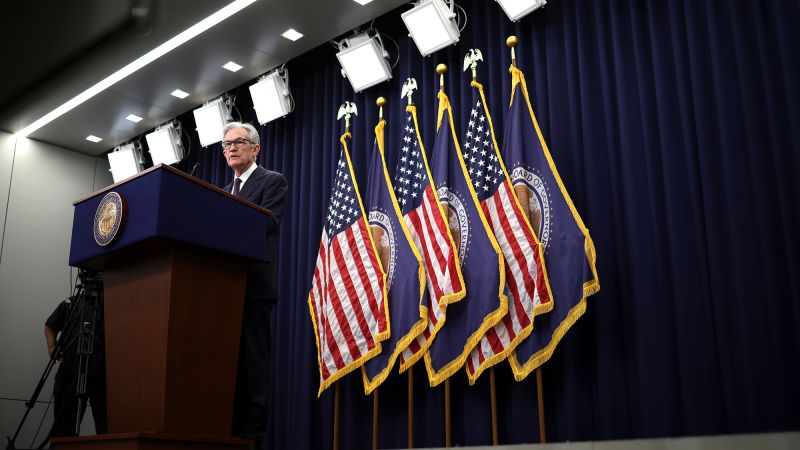On Wednesday, the Federal Reserve decided to maintain its interest rates, holding them steady as it navigates ongoing uncertainties stemming from President Donald Trump’s aggressive policy adjustments and the escalating tensions in the Middle East. This decision reflects a cautious approach as central bank officials weigh the potential economic impacts of multiple global factors. The Fed has kept its benchmark lending rate unchanged at a range of 4.25% to 4.5%, a rate that has been stable since January of the same year.
Economists widely discuss the implications of Trump’s trade policies, particularly his tumultuous trade war strategy, which is anticipated to increase prices and, consequently, unemployment levels. The tariffs that have been imposed thus far have resulted in a notable increase in imports to the United States, which in turn seems to be affecting economic growth negatively. Despite these developments, inflation has not surged alarmingly, and the labor market continues to show resilience. Nonetheless, Fed officials have adjusted their economic projections, anticipating a higher unemployment rate than previously estimated in March, along with increased inflation.
In a news conference following the Fed’s meeting, Chair Jerome Powell conveyed that he expects higher inflation to be a byproduct of Trump’s tariffs, although the specifics of this relationship remain uncertain. Powell articulated the need for a clearer understanding of the effects caused by the tariffs before contemplating any adjustments to borrowing costs. He expressed some discomfort with forecasting the exact consequences of tariffs on pricing, which seemed to contribute to a decrease in US stock markets in the wake of his comments.
According to a median projection, Fed policymakers are still looking at the possibility of two rate cuts within the year. However, it’s noteworthy that the number of policymakers anticipating no rate cuts has increased since March, suggesting a brewing divergence in expectations. Investors are bracing for what is often termed a “bad news rate cut,” where a reduction in rates becomes necessary due to rising unemployment, a potential consequence of the tariffs implemented by the Trump administration. Economists are warning that consumers and businesses may soon start feeling the adverse effects of these tariffs, especially as indicators point to an emerging caution in consumer spending.
Recent data indicates a significant decline in retail sales, particularly due to a sharp decrease in car purchases. Given that consumer spending accounts for around two-thirds of the US economy, these revelations raise alarms about future economic performance. Powell underscored that there are still many unknowns related to tariffs and their potential impact on prices. He mentioned that while inflation fueled by tariffs could be short-lived, it also harbors the risk of becoming a persistent issue with lasting effects on the economy.
As Powell elaborated, companies are beginning to respond to tariffs, with expectations that the ramifications will flow down the supply chain and ultimately affect consumers. Looking forward, the future of the economy, with respect to inflation and growth, rests heavily on the outcomes of trade policy negotiations. Powell indicated that there has been a gradual easing of uncertainty, coinciding with a reduction in trade tensions since the high points of escalation early in the spring.
On the international front, the Trump administration’s efforts have led to two completed trade agreements with the United Kingdom and China, yet there remains a substantial number of agreements yet to be finalized. Trump set a deadline of July 8 for reaching deals with every trading partner before revisiting previously stated aggressive tariff increases. Treasury Secretary Scott Bessent noted that it is likely Trump will choose to delay tariffs for countries currently in negotiations with the administration.
As Fed officials await further clarity—both on tariffs and the growing concerns surrounding conflicts in the Middle East—attention turns to the recent Israel-Iran conflict and its potential implications for the global oil market. This conflict has already led to rising oil prices, presenting risks for domestic energy costs. Powell acknowledged the likelihood of higher energy prices resulting from the conflict, but he expressed skepticism about their long-term impacts on inflation. Drawing comparisons to previous decades of economic shocks, Powell highlighted that the current US economy is less reliant on foreign oil than it once was, suggesting potential resilience amidst these disturbances.
In addition, the Fed is monitoring the implications of President Trump’s proposed tax and spending measures currently under Senate review. Analysis by the Tax Foundation reflects that this legislation may lead to an estimated 0.8% economic growth boost over the next thirty years, which is significantly lower than the 1.7% boost forecasted for the 2017 tax overhaul.
In summary, the Fed’s strategy remains one of caution as it assesses both international economic policies and domestic trade repercussions. As uncertainties continue to evolve, the Fed’s responses will likely adapt, focusing on economic indicators that may signal shifts in the labor market or inflation rates.



